About
About Us.
INTRODUCTION TO THE VIETNAM WAR ERA US GRENADES
CHAPTER 1 - INTRODUCTION.
1. Purpose and scope.
2. General.
a.
Grenades are classified by method of projection as hand grenades or rifle grenades and by origin as ordnance or chemical items. Ordnance grenades contain high explosive fillers which enable them to perform antitank or casulaty-producing missions. Chemical grenades contain fillers which enable them to perform casualty-producing, incendiary, illuminating, signaling, screening, or riot control missions. Most hand grenades, although design to be thrown, may also be projected from the service rifle using a grenade projection adapter.
b.
Ground pyrotechnic signals are also categorized as hand held or rifle projected. They are designed for use only as signalling and illuminating devices.
CHAPTER 2 - HAND GRENADES.
Section I. Characteristics and main parts.
3. General.
Hand grenades are designed for projection to a target by means of throwing. They assist the individual soldier in the accomplishment of six missions:
a. Producing casualties.
b. Signaling.
c. Screening.
d. Illuminating.
e. Producing incendiary effects.
f. Riot control.
Characteristics
All hand grenades share three characteristics:
a. Relatively short range in comparison to other infantry weapons.
b. Small effective casualty radius (distance from the grenade's detonation point in which a minmum of 50 percent of exposed personnel will become casualties).
c. Incorporate a delay element to permit safe throwing.
5. Main parts.
Hand grenades are composed of three main parts:
a. Body. This contains the filler and, in some grenades, provides fragmentation.
b. Filler. The filler is the chemical or explosive substance in the grenade body which gives the grenade its characteristics and determines its use.
c. Fuze assembly. This is the heart of the grenade and causes the grenade to function by means of a chain reaction of pyrotechnic, mechanical, or electrical actions.
Section II. Fuzes and hand grenade safety clip.
All fuzes in U.S. hand grenades, during the Vietnam war, may be categorized either detonating or igniting. With few exceptions, fuzes function in the following manner:
a.
When the safety pin is withdrawn from the fuze, the safety lever is released from the grenade body, but is held in place by the individual throwing the grenade or, if the grenade is rifle projected, by a grenade projection adapter.
A hand grenade safety clip, adaptable for the M26 series, the M33 series, the M56, M57, and MK2 fragmentation grenades, and the M30 practice grenade has been designed to prevent the grenade safety lever from springing loose should the safety pin be unknowingly or accidentally removed from the grenade. Pressure exerted by the safety clip prevents the release of the grenade safety lever, regardless of whether the safety pin is in place.
The safety clip (Figure 2) is a single piece of spring steel wire bent to form.
(a) A metal loop which fits around the grenade fuze at the grenade neck.
(b) A metal clamp which fits around and presses against the grenade safety lever.
(2) To attach the safety clip to the grenade (Figure 3)
(a) slide teh clip onto the handle.
(b) Attach the loop portion of the safety clip around the grenade fuze.
(c) Snap the clip end around the grenade safety lever.

Figure 1. Fuze functioning.
Note. The hand grenade safety clip may be issued attached to the above grenades, or it may be issued as a separate item.

Figure 2. Hand grenade safety clip fitted to M30 practice grenade.
b. When the safety lever (Figure 1) is released, it is forced away from the grenade body by a striker acting under the force of a striker spring.
c. As the safety lever is forced away from the grenade body, the striker rotates on its axis and strikes the primer.
d. When struck, the primer emits an intense flash of heat which ignites the delay element.
e. The delay element burns for the prescribed delay time and thereupon initiates the detonator or igniter.
f. The detonator or igniter sets off the grenade's filler. Detonators are used in fragmentation , white phosphorus smoke, and bursting chemical hand grenades. Igniters are used with practice and burning chemical hand grenades.
7. Detonating Fuzes
a. M204A1 and M204A2 fuzes (1, Figure 4). These fuzes are used with the MK2, the M26, and the M26A1 fragmentation hand grenades. The fuze well accepting these fuzes will also accept any standrad firing device or the shipping plug priming-adapter of teh M18A1 antipersonnel mine (Claymore). Each fuze functions as described in paragraph 6. The delay element is a power train requiring 4 to 5 seconds to burn down to the detonator. The detonators sets off the filler.
b. M206A2 fuze (2, figure 4). This fuze is used with the MK3A2 offensive hand grenade and the M34 White phosphorus smoke hand grenade. The M206-series of fuzes are similar to teh M204-series of fuzes with the exception of the safety lever. The fuze functions as described in paragraph 6. The delay element is a power train requiring 4 to 5 seconds to burn down to the detonator. The detonator sets off a tetryl burster, which in turn ruptures the grenade body and disperses the white phosphorus filler. (In the MK3A2 offensive grenade, no burster is required).
c. C12 integral fuze (3, figure 4). This fuze is an integral part of teh M25-series of riot control hand grenades. The fuze consists of a firing pin which is screwed into the base of the grenade body, an arming sleeve, and a slider assembly. The slider assembly contains a delay element of 1.4 to 3 seconds and a small detonator. When the safety pin is removed, the arming sleeve is held in place with the thumb. When the arming sleeve is released, the slider assembly is forced downward toward the firing pin under pressure of the firing spring. At the bottom of the fuze well, the slider strikes the firing
pin and ignites the delay elenment which, in turn, sets off the detonator. The detonator bursts the grenade body and disperses the riot control agent over an area of 5 meters in diameter.
d. M213 and M215 fuzes. The M213 and M215 fuzes are similar in their functioning to the M204-series of fuzes. The M213 and M215 fuzes differ from each other only slightly and differ from the M204-series of fuzes in such physical details as shape of body and safety lever. The M213 and M215 fuze threads are larger than the M-204-series fuze threads. Therefore, the fuzes cannot be used interchangeably. The M213 fuze is used with the M33 fragmentation grenade and the M215 fuze is used with M56 fragmentation grenade. These fuzes may be used interchangeably, but interchanging is not recommended.
e. M217 fuze (4, figure 4). This fuze is used with the M59 and the M57 fragmentation hand grenades. The M217 is an impact detonating fuze which functions by electrical means. The purpose of the fuze is to provide immediate detonation on impact, to prevent the grenade from being thrown back by the enemy, amd to prevent the grenade from rolling away from targets located on sloping terrain. The M217 fuze can be distinguished from other types of fuzes by the word IMPACT embossed in raised letters on the red safety lever.
The M217 fuze thread diameter is larger than that of other fuzes (except the M213 and M215 fuzes) and therefore the M217 fuze is not interchangeable with other types of fuzes (Except the M213 or M215 fuzes) or firing devices.

Figure 3. Attaching the hand grenade safety clip.
(1) The M217 is an electrical fuze which functions either on impact or after a lapse of 4 seconds after the striker ignites the primer. The fuze has an arming delay of 1 second which gives the soldier a margin of safety when he throws the grenade. This delay means that when the striker hits the primer, the grenade is still not armed until 1 second arming delay is expended; therefore, if a grenade is accidentally dropped after the safety pin has been removed, a soldier still has adequate time to pick the grenade up and throw it to a safe area.

Figure 4. Detonating fuzes. (2) Grenades armed with the M217 impact detonating fuze must be thrown to a minimum height of 4.5 meters (16 feet) (Figure 5). This height gives the grenade enough flight time to expend the 1 second arming delay and allows the grenade to detonate on impact. The grenade will detonate on impact when the arming delay is expended, regardless of teh angle at which it strikes a target. If the grenade impacts before the arming delay has elapsed, or if no impact occurs after release of teh safety lever, the grenade will detonate after a delasy of 4 seconds.
If the grenade does not detonate, the fuze will become inert within 30 seconds from the time the safety lever is released.
WARNING :
Grenades armed with the impact detonating fuze will not be projected from the service rifle. In training, personnel will not release the safety lever prior to throwing nor will they observe the grenade's impact. A 5 minute waiting period must be observed prior to approaching a dud. If a grenade armed with the impact detonating fuze is dropped accidentally after the safety pin has been removed, the grenade must be picked up and thrown to a safe area. Under no circumstances should the grenade be kicked or tossed into a sump or ditch, since any sudden jarring of the grenade after the arming delay is expended, will cause detonation.
8. Ingiting Fuzes.
a. M201A1 Fuze (1, figure 6).
This fuze is designed for use with chemical hand grenades whose fillers are initiated by burning. These include the following:
The AN-M8 HC white smoke grenade.
The AN-M14 TH3 incediaary grenade
The M18 colored smoke grenade
The M201A1 fuze is interchangeable with any standard firing device. The fuze functions as described in paragraph 6. The time delay element is a powder train requiring 1.2 to 2 seconds to burn to the igniter. The igniter ignites the filler or a pyrotechnic starter with a violent burning action and causes the filler to be expelled from the grenade body.
b. M205A1 and M205A2 fuzes (2, figure 6).
These fuzes are used with the M30 practice hand grenade. The fuze functions as described in paragraph 6. The time delay element is a powder train with a 4 to 5 second burning time. c. Specisl igniter (3, figure 6).
This fuze is used with the MKI illuminating hand grenade. The fuze functions as described in paragraph 6. The special igniter differs from other igniting type fuzes in that it contains a quick match, rather than a powder delay train. The quick match has a burning time of 7 seconds, after which it sets off an igniter charge. The igniter charge initiates the burning process of the grenade's filler.
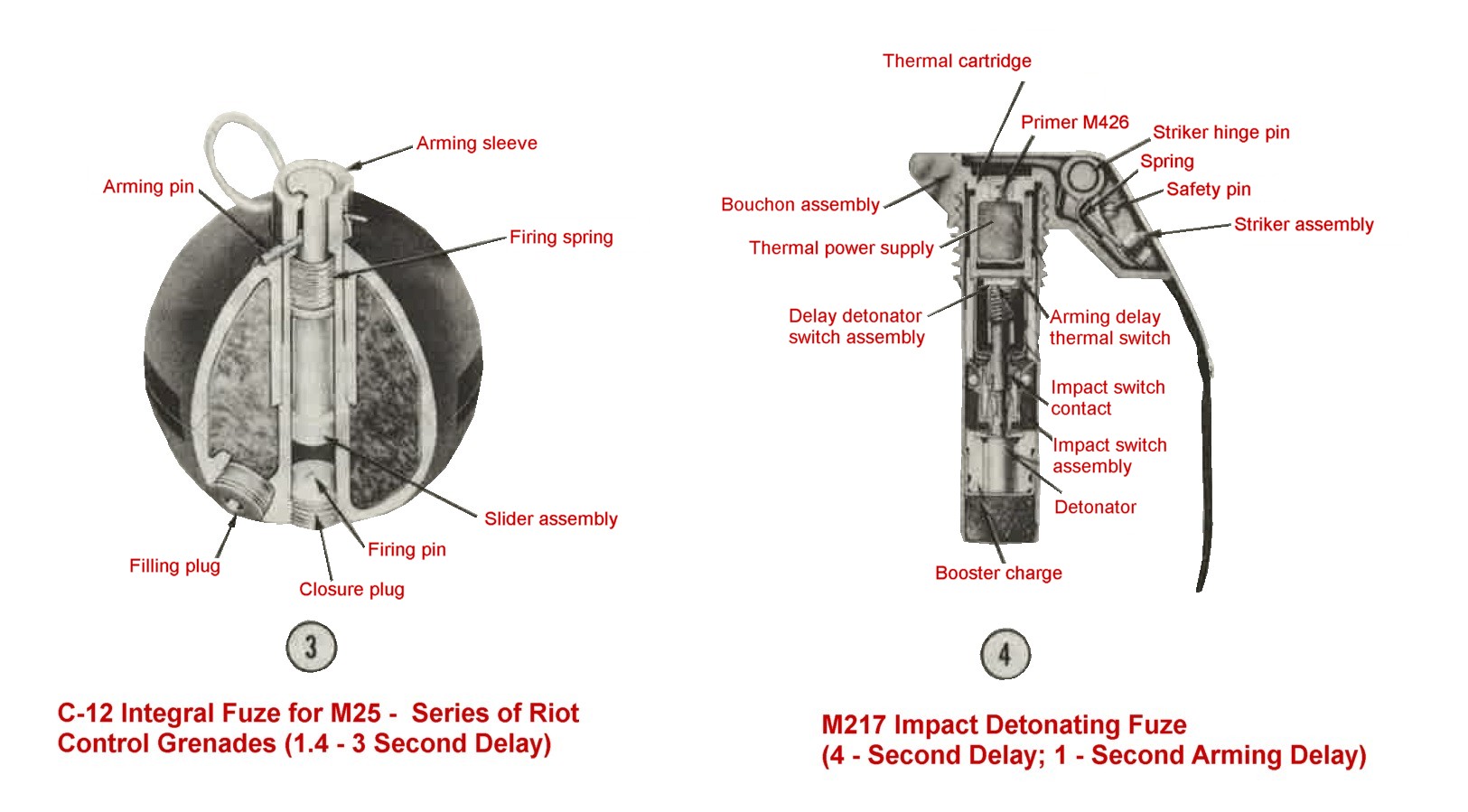
Figure 4-a. Detonating fuzes.
Section III. Fragmentation hand grenades.
9. General.
Fragmentation hand grenades (fig. 7) are useful weapons in both the offensive and defensive combat roles. They are particularly effective for close combat and are capable of inflicting multiple casualties without requiring perfect aiming or disclosing the soldier's position.
10. MK2 Fragmentation Hand Green
The MK2 fragmentation hand grenade is being phased out as existing quantities are expended. The grenade is presently being used by the armies of our allies in many parts of the world.
a. Body. Cast iron (serrated to facilitate fragmentation).
b. Filler. 2 ounces of flaked TNT.
c. Fuze. M204Al, or M204A2 (para 7a).
d. Weight. 21 ounces.
e. Safety Clip. For the proper method of installing the hand grenade safety clip, see paragraph 6a(2).
f. Capabilities. The average soldier can throw the grenade 30 meters, or it can be projected 140
meters from the service rifle. The grenade has an effective casualty radius of 10 meters.
g. Color.
Olive drab body with a single yellow band at the top. The yellow band indicates a high explosive filler.
11. M26 and M26A1 Fragmentation Hand Grenades.
The M26 fragmentation hand grenade was designed to replace the MK2 grenade and has been in the hands of troops since the Korean Conflict. The original design of the M26 grenade was later modified to improve its fragmentation characteristics and was designated the M26Al. Both the M26 and the M26Al grenades are presently in use.
| a. | Body. Thin sheet metal. (Fragments are produced from a serrated wire coil fitted to the inside of the sheet metal grenade body.) |
| b. | Filler. 5.5 ounces of composition B. |
| c. | Fuze. M204Al or M204A2 with the M26; M204A2 with the M26Al. |
| d. | Weight. 16 ounces. |
| e. | Safety Clip. For the proper method of installing the hand grenade safety clip, see paragraph 6a(2). |
| f. | Capabilities. The average soldier can throw the grenade 40 meters, or it can be projected 160 meters from the service rifle. The grenade has an effective casualty radius of 15 meters. |
| g. | Color and Markings. Olive drab body with a single yellow band at the top and yellow markings. The yellow band and markings indicate a high explosive filler. |
12. M56 Fragmentation Hand Grenade
The M56 grenade differs from the M26Al grenade (2, fig. 7) in that the M56 grenade contains a larger amount of filler and its fuze well is larger in diameter to accommodate the larger M215 time delay fuze.
a. Body. Same as the M26Al grenade.
b. Filler. 6.3 ounces of composition B.
c. Fuze. M215 time delay fuze (para 7d).
d. Weight. 15.2 ounces.
e. Capabilities. Same as the M26Al grenade.
f. Color and Markings. Same as the M26Al grenade.
M57 Fragmentation Hand Grenade.
(3, figure 7)
The M57 grenade differs from the M56 grenade in that it has an impact detonating fuze.
| a. | Body. Same as the M26Al grenade. |
| b. | Filler. 6.3 ounces of composition B. |
| c. | Fuze. M217 impact detonating fuze (paragraph 7e). |
| d. | Weight. 15.2 ounces. |
| e. | Capabilities. Same as the M26Al grenade, except that the M57 grenade will detonate on impact 1 second after the safety lever has been released or automatically within 4 seconds after the safety lever has been released if no impact occurs. The M57 cannot be rifle projected. The "cookoff" technique (para 37) will not be attempted with the M57 grenade. |
| f. | Color and Markings. Same as the M26Al grenade, except that the safety lever is painted red and has the word IMP ACT embossed in raised letters on its surface. |
M33 Fragmentation Hand Grenade.
(4, Figure 7)
The M33 grenade differs from the M26, M26Al, M56, and M57 grenades in that the M33 has an oblate spheriod body and contains a larger amount of filler. The diameter of the M33 fuze well is the same as that of the M56 and M57 fuzes.
| a. | Body. Steel with an oblate spheriod shape. |
| b. | Filler. 6.5 ounces of composition B. |
| c. | Fuze. M213 time delay fuze (para 7d). |
| d. | Weight. 13.9 ounces. |
| e. | Capabilities. Same as the M26Al grenade, except that the M33 grenade cannot be rifle projected. |
| f. | Color and Markings. Same as the M26Al grenade. |
15. M59 Fragmentation Hand Grenade.
(5, Figure 7)
The M59 grenade differs from the M33 in that it is armed with an impact detonating fuze.
| a. | Body. Same as the M33 grenade. |
| b. | Filler. 6.5 ounces of composition B. |
| c. | Fuze. M217 impact detonating fuze (paragraph 7e). |
| d. | Weight. 13.9 ounces. |
| e. | Capabilities. Same as the M26Al grenade, except that the M59 grenade will detonate on impact 1 second after the safety lever has been released or automatically within 4 seconds after the safety lever has been released if no impact occurs. The M59 grenade cannot be rifle projected. The '!cookoff" technique (para 37) will not be attempted with the M59 grenade. |
| f. | Color and Markings. Same as the M26Al grenade, except that the safety lever is painted red and has the word IMP ACT embossed in raised letters on its surface. |

Figure 5. Impact characteristics of the M217 impact detonating fuze.
Section IV. Chemical smoke hand grenades.
16. General.
Chemical smoke hand grenades are designed primarily for signaling and screening. This grouping, however, includes the white phosphorous smoke grenades which, in addition to their signaling and screening capabilities, have casualtyproducing and incendiary capabilities. The white phosphorous grenade is similar to other chemical smoke hand grenades in color. For this reason, caution must be exercised to insure that the grenade is not used near friendly personnel for signaling or for laying down a smoke screen which friendly personnel will have to move through.
17. M34 White Phosphorus Smoke Hand Grenade
(1 and 2, Figure 8)
The M34 white phosphorous smoke hand grenade is the most versatile of all hand grenades. The grenade can be used for signaling, screening, incendiary missions, or for producing casualties.
| a. | Body. Rolled steel (serrated to facilitate fragmentation). |
| b. | Filler. 15 ounces of white phosphorous. |
| c. | Fuze. M206A2 (paragraph 7b). |
| d. | Weig ht. 27 ounces. |
| e. | Capabilities. The average soldier can throw the grenade 30 meters, or it can be projected 120 meters from the service rifle. The grenade has a bursting radius of 35 meters. All friendly personnel within this 35-meter area should be in a covered position to avoid being struck by burning particles. The WP filler burns for approximately 60 seconds at a temperature of 5,000°F. This intense heat causes the smoke produced by the grenade to rise quite rapidly, especially in cool climates, making the M34 grenade less desirable for use as a screening agent. (The M15 WP smoke hand grenade is similar to the M34. For detailed information, see TM 9-1330-200.) |
| f. |
Color and Markings.
(1) Under the old ammunition color-coding system, the white phosphorous grenade is light gray with a single yellow band and yellow markings. (2) Under the newer standard color-coding system, the M34 grenade is light green with a single yellow band and light red markings. Note. Most M34 WP smoke hand grenades presently in use were manufactured prior to the standard colorcoding system agreement and are painted according to the old color code. |
18. AN-M8 HC White Smoke Hand Grenade.
(3, Figure 8)
The AN-MS white smoke hand grenade is used to produce dense clouds of white smoke for signaling and screening. The smoke produced by this grenade clings to the ground more readily than the smoke of the M34 grenade. The AN-MS grenade is used for ground-to-ground and groundto- air signaling, for marking targets or landing zones, and for screening the move.ments of small units for short periods of time.
| a. | Body. Sheet steel. |
| b. | Filler. 19 ounces of type C, HC smoke mixture. |
| c. | Fuze. M201Al (para 8a). |
| d. | Weight. 24 ounces. |
| e. | Capabilities. The average soldier can throw the grenade 30 meters, or it can be projected 120 meters from the service rifle. The grenade emits a dense cloud of white smoke for 105 to 150 seconds. |
| f. | Color and Markings. The grenade is light green with black markings and has a white top to indicate the color of smoke it produces. |
19. M18 Colored Smoke Hand Grenade.
(4, Figure 8)
The M18 colored smoke hand grenade is used as a ground-to-ground or ground-to-air signaling device, a target or landing zone marking device, or to screen the movements of small units for short periods of time. The grenade is available in four colors: red, green, yellow, and violet.
| a. | Body. Sheet steel. (Four emission holes at the top and one at the bottom of the grenade release the filler when the grenade is ignited.) |
| b. | Filler. 11.5 ounces of colored smoke mixture. |
| c. | Fuze. M201Al (para 8a). |
| d. | Weight. 19 ounces. |
| e. | Capabilities. The average soldier can throw the grenade a distance of 35 meters, or it can be projected 120 meters from the service rifle. The grenade produces a cloud of colored smoke for 50 to 90 seconds. |
| f. |
Color and Markings.
(1) Most grenades of the M18-series pres-· ently in use are not marked according to the old or the standard color-coding system. Instead, they are olive drab with gray or yellow markings and a top the same color as the smoke produced by the grenade. (2) Under the standard color-coding system, the M18 grenade is the same color as the AN-M8, except that the top of the grenade is either red, green, yellow or violet indicating the color of smoke it produces. |
Note.
When using the AN-MS or the MlS grenades to mark landing or drop zones, care must be taken to insure the grenade is thrown into an area where the smoke will not obscure the landing area. If the AN-MS or the MlS grenades fail to function, they may be ignited by punching a hole in the bottom of the grenades to expose the filler. The filler may then be ignited with a match or other open flame. When using this expedient method, the grenades must immediately be thrown after ignition, since they burn at a fairly high temperature and produce very dense smoke. This smoke is harmful if inhaled in large quantities. When using the AN-MS HC white smoke grenade or the M34 WP smoke grenade for signaling or screening, care must be taken to insure the grenades are not thrown into areas where they may start fires detrimental to tactical operations.
Section V. Riot control hand grenades.
20. General.
Riot control hand grenades are designed chiefly to aid in quelling civil disturbances, prisoner of war riots, or similar disorders which require the use of nonlethal agents to restore order. These grenades are also effective in clearing buildings or tunnel systems in which noncombatants may be mixed with enemy personnel or on operations where the taking of prisoners is the primary mission. The M7 A2 grenade and all other types of burning grenades should not be used inside buildings. The M25 CS grenade, the baseball type, can be employed inside buildings since it does not constitute a fire hazard. The grenade should be used inside buildings to force personnel outside or to prevent their entry. Most riot control hand grenades may also be used in training to simulate chemical attacks.
21. Riot Control Agents.
To facilitate the accomplishment of the above missions, three types of riot control agents are available in hand grenade form.
a. CN, commonly known as "tear gas."
The effects of CN are a stinging sensation of the eyes and a continuous flow of tears.
b. DM,
a vomiting agent, often called "Adamsite," produces nausea and vomiting and normally is used in hand grenades in combination with other agents.
c. CS,
the most powerful of the riot control agents. It produces the same effects as CN and adds involuntary closing of the eyes, nasal drip, severe coughing, tightness of the chest, extreme difficulty in breathing, and a stinging sensation on moist areas of the skin.
22. M6 and M6A1 CN-DM Riot Control Hand Greandes.
(1 and 2, figure 9)
The M6 and M6Al riot control hand grenades contain a combination mixture of CN and DM. They differ chiefly in external appearance and the manner in which the filler is combined.
| a. Body | Sheet steel. (The M6 has six emis sion holes at the top and two rows of nine emission holes each along the sides. The M6Al grenade has four emission holes at the top and one at the bottom.) |
| b. Filler. | MG grenade, 10.5 ounces of CN-DM mixture; M6Al grenade, 9.5 ounces of CN-DM mixture. |
| c. Fuze. | M201Al (para 8a). |
| d. Weight. | M6 grenade, 17 ounces; M6Al grenade, 20 ounces. |
| e. Capabilities. | The average soldier can throw the grenades 35 meters. The M6 and the M6Al grenades can be projected 120 meters from the service rifle. Both grenades emit a dense cloud of irritant agent for 20 to 60 seconds. |
| f. Color and Markings. | The M6 and the M6Al grenades have a gray body with a single red band and red markings. (Under the standard colorcoding system, the single red band and red markings indicate a nonpersistent, riot control filler. A double red band with red markings indicates a persistent riot control filler, and any combination of green bands and green markings indicates a casualty-producing filler. Presently, there are no casualty agents in grenade form.) |

Figure 6. Ignition fuzes.
23. M7 and M7A1 CN Riot Control Hand Grenades.
(3, figure 9)
The M7 and the M7 Al riot control hand grenades contain only CN for a filler. They differ chiefly in body construction and the amount of filler they contain.
| a. Body. | M7 grenade, same as the M6; M7 Al grenade, same as the M6Al grenade. |
| b. Filler. | M7 grenade, 10.25 ounces of CN; M7 Al grenade, 12.5 ounces of CN. |
| c. Fuze. | M201Al (para 8a). |
| d. Weight. | M7 grenade, 17 ounces; M7Al grenade, 18.5 ounces. |
| e. Capabilities. | The average soldier can throw the grenades 35 meters, or they can be projected 120 meters from the service rifle. Both grenades produce a dense cloud of irritant agent for 20 to 60 seconds. |
| f. Color and Markings. | Same as the M6 and M6Al grenades. |

Figure 7. Fragmentation hand grenades.
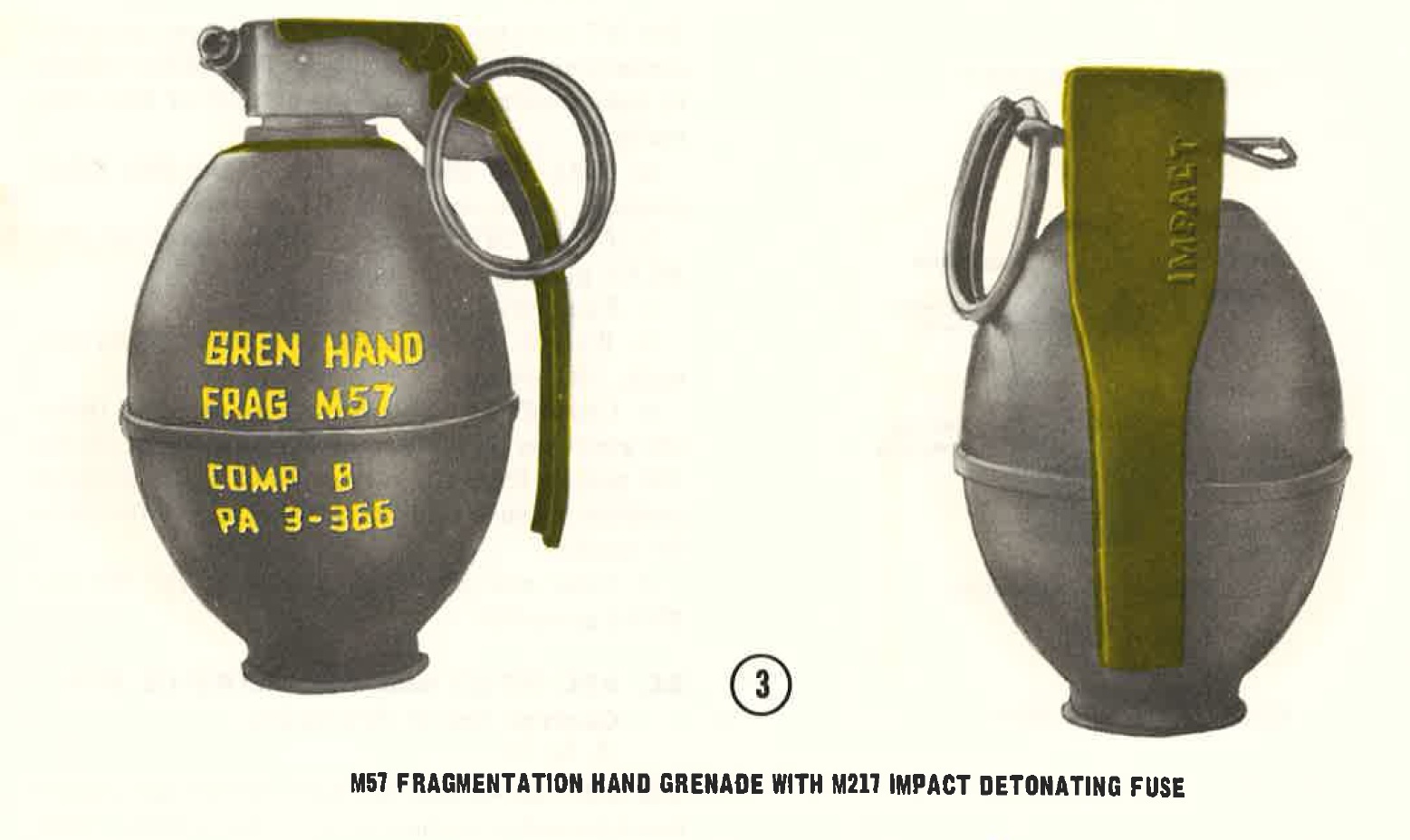
Figure 7-a. Fragmentation hand grenades.
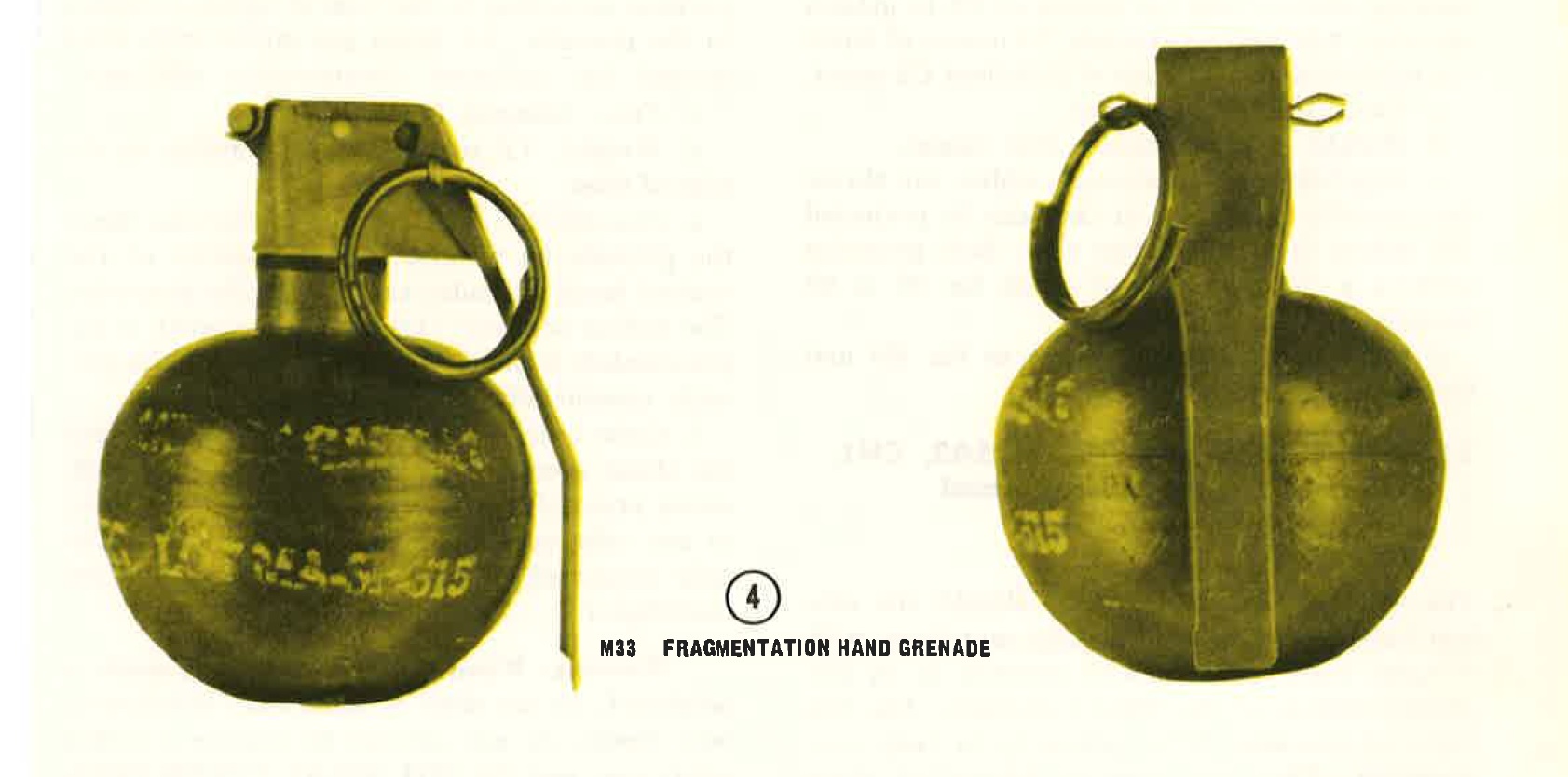
Figure 7-b. Fragmentation hand grenades.
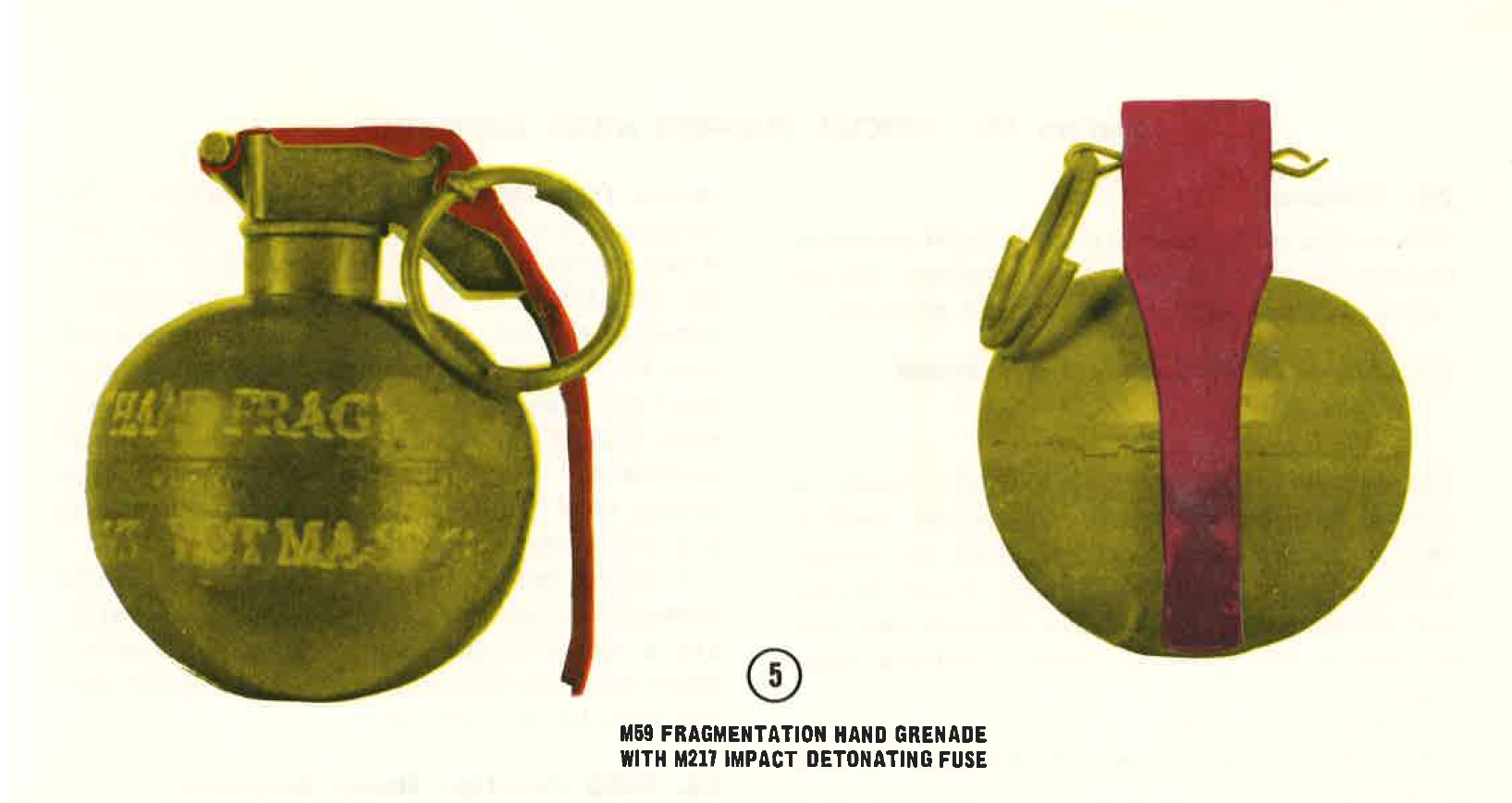
Figure 7-c. Fragmentation hand grenades.
24. ABC-M7A2 and ABC-M7A3 CS Riot Control Hand Grenades.
The ABC-M7 A2 and the ABC-M7 A3 riot control hand grenades contain only CS for a filler. They differ only in the amount of filler and the form of CS they contain.
| a. Body. | The bodies of both grenades are the same as the M6Al and the M7 Al grP,nades with four emission holes at the top and one at the bottom. |
| b. Filler. | ABC-M7 A2 grenade, 5.5 ounces of burning mixture and 3.5 ounces of CS in gelatin capsules; ABC-M7 A3 grenade, 7.5 ounces of burning mixture and 4.5 ounces of pelletized CS agent. |
| c. Fuze. | M201Al (paragraph 8a). |
| d. Weight. | Approximately 15.5 ounces. |
| e. Capabilities. | The average soldier can throw the grenades 40 meters, or they can be projected 120 meters from the service rifle. Both grenades produce a cloud of irritant agent for 20 to 60 seconds. |
| f. Color and markings. | Same as the M6 and the M6Al grenades. |
25. ABC-M25A1 and ABC-M25A2, CN1, DM1, CS1 Riot Control Hand Grenades.
The ABC-M25Al and the ABC-M25A2 riot control hand grenades are bursting munitions with integral fuzes. The M25A2 grenade is an improved version of the M25Al grenade. The two types of grenades differ primarily in body construction. They are used to deliver all three types of riot control agents presently used in hand grenades.
| a. Body. | Compressed fiber or plastic hemispheres. |
| b. Filler. | The fillers of the M25-series of riot control hand grenades vary in weight and composition according to the type of agent contained in the grenade. All fillers are mixed with silica aerogel for increased dissemination efficiency. |
| c. Fuze. | Integral ( paragraph 7 c). |
| d. Weight. | 7.5 to 8 ounces, depending on the type of filler. |
| cabilities. | The average soldier can throw the grenade 50 meters. The M25-series of riot control hand grenades cannot be rifle projected. The radius of burst (visible cloud agent) is approximately 5 meters, but fragments of the grenade occasionally are projected 25 meters. |
| f. Color and Markings. | Same as the M6 and the M6Al grenades. (Most grenades of the M25- series presently in use are not painted according to any color-coding system. They are either totally unpainted or have only a red band and red markings.) |
Warning: When the ABC-M25Al grenade is employed, do not drop as immediate functioning may result; do not attempt to replace a pulled safety pin; and DO NOT RELAX THUMB PRESSURE ON ARMING SLEEVE AFfER THE SAFETY PIN IS PULLED.
Section VI. Special purpose grenades.
26. General.
This section covers special purpose hand grenades. Included in this category are incendiary, illuminating, practice, and offensive hand grenades.
27. AN-M14 TH3 Incendiary Hand Grenade
(1, figure 10)
The AN-M14 TH3 incendiary hand grenade is used to destroy equipment. It can be used to destroy or damage equipment, such as mortar tubes, artillery and recoilless rifle breech blocks, and vehicle engine blocks. The grenade may also be used to start fires in areas containing flammable materials.
| a. Body. | Sheet steel. |
| b. Filler. | 26.5 ounces of thermate (TH3) mixture. |
| c. Fuze. | M201Al (paragraph 8a). |
| d. Weight. | 32 ounces. |
| e. Capabilities. | The average soldier can throw the grenade 25 meters, or it can be projected 120 meters from the service rifle. A portion of the thermate mixture is converted to molten iron, which burns at 4000°F. and will fuse together the metallic parts of any object with which it comes in contact. Thermate is an improved version of thermite, the incendiary agent used in hand grenades during World War II. The thermate filler of the AN-M14 grenade burns for 40 seconds and can burn through a ½-inch homogeneous steel plate. It produces its own oxygen and will burn under water. |
| f. Color and Markings. | Incendiary grenades presently in use are gray with purple markings and a single purple band. Under the standard color-coding system, incendiary grenades are light red with black markings. |
28. M30 Practice Hand Grenabde
(2, figure 10)
The M30 practice hand grenade simulates the M26-series of fragmentation hand grenades for training purposes. The grenade adds realism to training and familiarizes the soldier with the functioning and characteristics of. the fragmentation hand grenade. (The M21 and MKlAl practice grenades are similar in operation but are standard "C" items. For detailed information, see TM 9-1300-200.)
| a. Body. | Cast iron. (The grenade body is reusable.) |
| b. Fuze. | M205Al or M205A2. |
| c. Weight. | 16 ounces. |
| d. Safety Clip. | For the proper method of installing the hand grenade safety clip, see paragraph 6a (2). |
| e. Capabilities. |
The average soldier can throw
the grenade 40 meters, or it can be projected 160
meters from the service rifle. The M30 grenade
emits a small puff of white smoke after a delay
of 4 to 5 seconds and makes a loud "popping"
noise. The grenade body can be used repeatedly
by replacing the fuze assembly.
Caution: Caution must be exercised to insure that no detonating fuzes are used with the grenade. The M205Al and M205A2 practice fuzes are the only ones authorized for use with the M30 grenade. A detonating fuze may cause the grenade body to shatter on detonation, scattering dangerous fragments about the detonation point, |
| f. Color and Markings. | Light blue with white markings. (The safety lever of the fuze is light blue with black markings and a red tip.) |
MKI Illuminating Hand Grenade
The MKI illuminating hand grenade is a ground signaling and illuminating item. Its uses are similar to ground pyrotechnic signals, except that the grenade burns only at ground level, whereas pyrotechnic signals burn in flight or while suspended from a parachute. The MKI should not be used in deep mud or swampy ground, because the grenade may become embedded in the ground with the result that little or no illumination is produced. The grenade burns with a very hot flame and may be used as an incendiary agent. Because of its incendiary nature, caution should be exercised in using the MKI to prevent fires which would be detrimental to tactical operations.
| a. Body. | Sheet steel. |
| b. Filler. | 3.5 ounces of illuminating pyrotechnic composition. |
| c. Fuze. | Special igniter (paragraph 5c). |
| d. Weight. | 10 ounces. |
| e. Capabilities. | The average soldier can throw the grenade 40 meters or it can be projected 200 meters from the service rifle. The filler will burn for 25 seconds producing 55,000 candlepower. The MKI grenade will illuminate an area 200 meters in diameter. |
| f. Color and Markings. | White with black markings (old) ; unpainted with black markings (new). |
30. MK3A2 Offensive Hand Grenade.
(4, figure 10)
The MK3A2 offensive hand grenade is designed to produce casualties during close combat while minimizing danger to friendly personnel. The grenade is also used for concussion effects in enclosed areas, for blasting, or for demolition tasks.
| a. Body. | Fiber (similar to the packing container for the fragmentation hand grenade). |
| b. Filler. | 8 ounces of TNT. |
| c. Fuze. | M206Al or M206A2 (para 7b). |
| d. Weight. | 15.6 ounces. |
| e. Capabilities. | The average soldier can throw the grenade 40,meters. The MK3A2 has an effective casualty radius in open areas of 2 meters. Secondary missiles ·and bits of the fuze may be projected as far as 200 meters from the detonation point. The grenade cannot be rifle projected. |
| f. Color and Markings. | The grenade is black and has yellow markings around its middle. |
Throwing Positions.
In training, throwing positions are used for uniformity and control and to familiarize personnel with the proper manner of throwing grenades from positions commonly used in combat. Care must be taken not to overemphasize throwing positions in training; for in combat, the soldier's throwing position will be dictated by the amount of available cover, the range to the target, and the type and location of the target. The positions described below point out the use and limitations of each position.

Figure 8. Chemical smoke hand grenades.
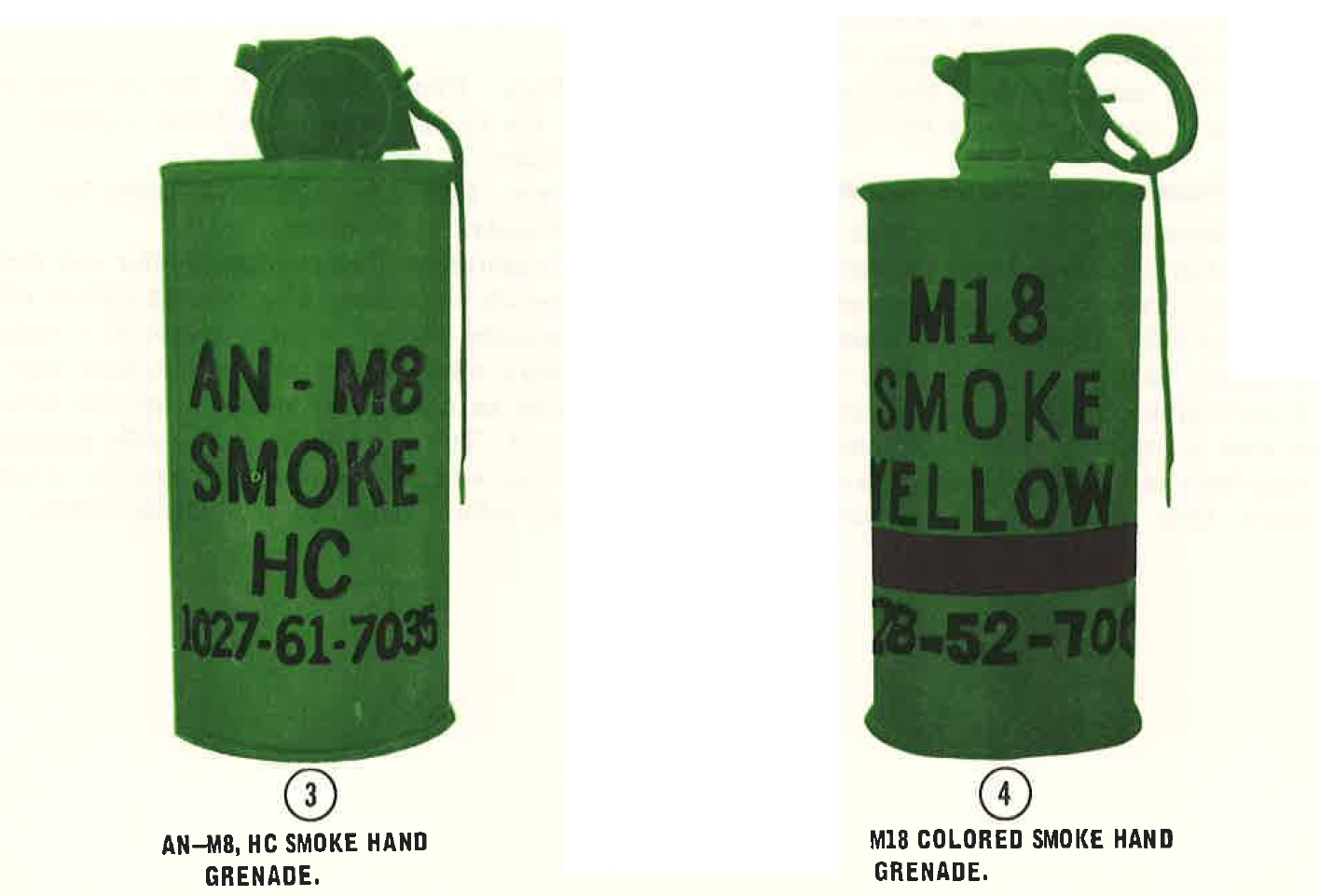
Figure 8-a. Chemical smoke hand grenades.

Figure 9. Riot control hand grenades.
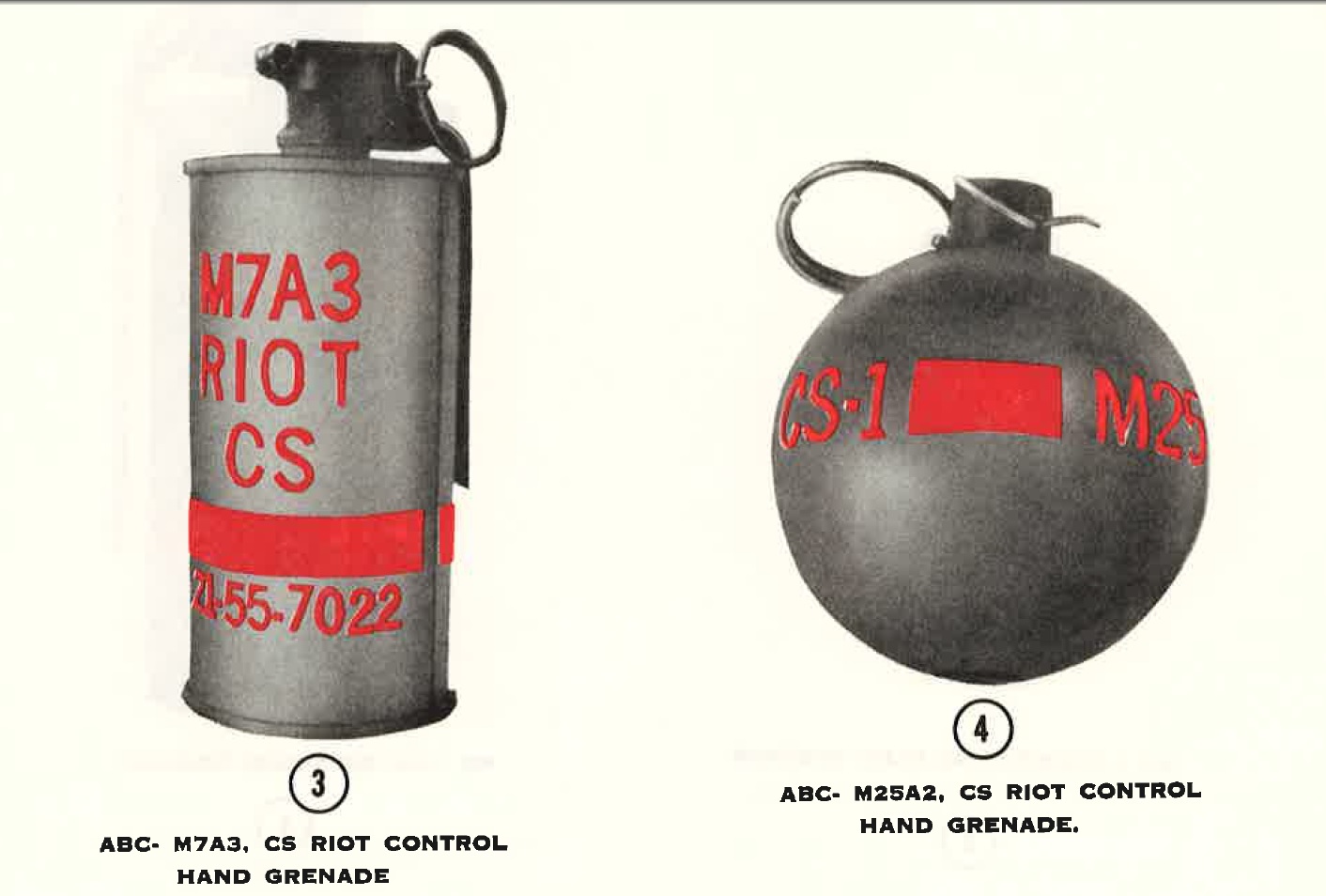
Figure 9-a. Riot control hand grenades.

Figure 10. Special purpose hand grenades.
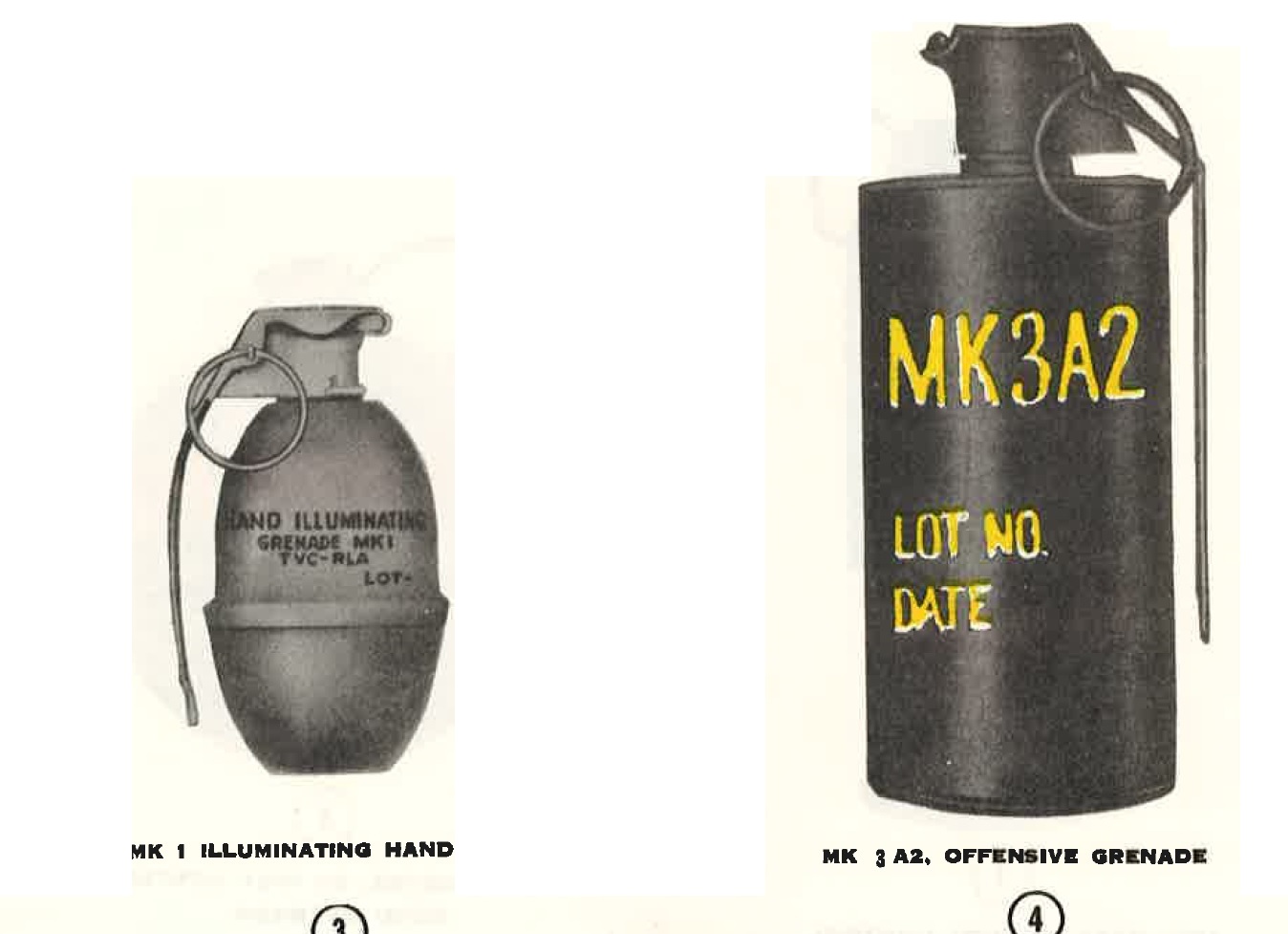
Figure 10-a. Special purpose hand grenades.